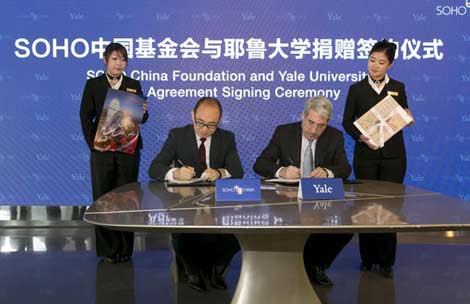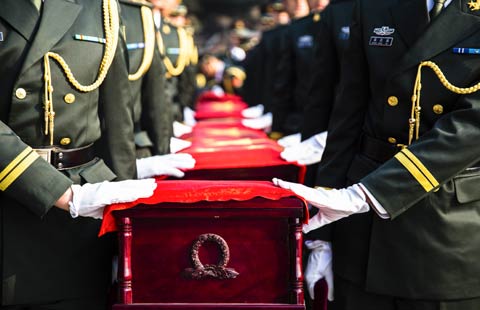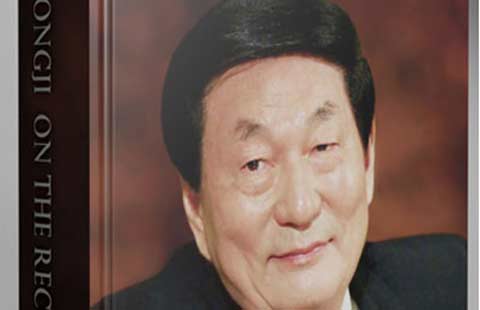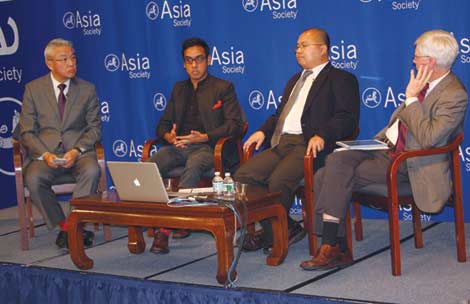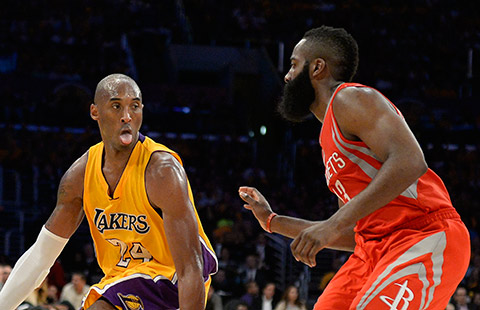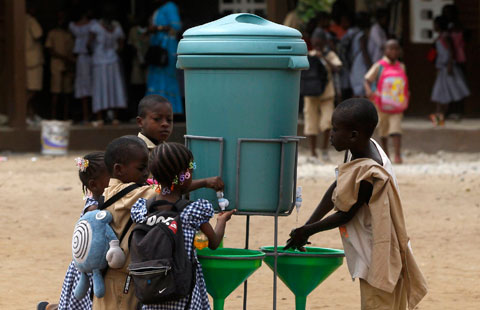Militaries to reduce misunderstanding with more exchanges
Updated: 2014-05-20 09:49
By Chen Weihua(China Daily USA)
|
||||||||
News media headlines could always be misleading as one suggested that Fang Fenghui, chief of the General Staff of China's People's Liberation Army, and Martin Dempsey, chairman of the Joint Chiefs of Staff, "debated heatedly" for an hour at the joint press conference in Pentagon last Thursday.
The two did disagree on a few things such as what constitutes the status quo in the East and South China seas and whether the US rebalance to Asia strategy has emboldened or has been taken advantage by some countries in the region to take a more confrontational stance in maritime territorial disputes with China.
But overall the press conference should be described as relatively smooth, and not a hot debate or Dempsey got hugely upset as some suggested.
The welcoming ceremony on Thursday morning is telling. General Fang, who was paying a five-day visit to the US at the invitation of Dempsey, received a 19-gun salute, the highest honor for anyone who is not a nation's president. Besides, the more than 250 honor guards from army, navy, air force, marines and coast guard at the ceremony have surprised many Pentagon officials. Some said they have not seen such grand welcome ceremony for about two years.
Despite some inherited Cold War legacy, the two militaries are trying hard to understand each other better and avoid misunderstanding and miscalculation.
One way of doing that is to strengthen the high-level visits between the militaries as agreed upon by Chinese President Xi Jinping and US President Barack Obama at Sunnylands, California, last June.
US Defense Secretary Chuck Hagel returned from visit to China in April. It is one of the many senior level visits between the two militaries in the past two years.
In July, Jonathan Greenert, chief of Naval Operations, will pay a return visit to China following the visit to the US last September by his Chinese counterpart, Wu Shengli, commander-in-chief of PLA Navy.
Greenert actually was in China's coastal city of Qingdao briefly in late April attending the 14th Western Pacific Naval Symposium, a forum that allows for the exchange of ideas between heads of navy and facilitates partnerships among the 21 nation-state members.
Speaking at the Center for Strategic and International Studies in Washington on Monday, Greenert applauded the Code of Unplanned Encounters agreed upon by the navies at the Qingdao meeting.
He described his upcoming visit to China as part of a continued deliberate drumbeat of working together and building a constructive relationship between the two militaries.
"Talking is good, exercise is better," he said.
China will be attending the Rim of the Pacific, or RIMPAC, naval exercises set for June 26 and August 1.
China will be participating in the exercise for the first time since it was launched in 1971. The PLA Navy plans to send four ships – a destroyer, a frigate, an oiler and a hospital ship – to the largest naval war game, which will involve 23 nations, 47 surface ships, six submarines and more than 200 aircraft and 25,000 troops.
Although the US military is still limited by what kind of exercises it can conduct with China under the National Defense Authorization Act by the US Congress, Greenert described the exercises conducted by China and the US in RIMPAC are "reasonably comprehensive" and he feels pretty good "where we are heading in RIMPAC."
Greenert and Wu have agreed on the so-called eight initiatives to help improve operations and understanding between the two navies, ranging from the exchanges of midshipman and midgrade officer to medical officers from China's hospital ship Peace Ark to US hospital ship Mercy.
Greenert described Chinese navy as active, capable and professional blue water navy. He praised the PLA Navy for its capacity in humanitarian assistance and disaster relief, as evidenced in the search for the missing Malaysian Airlines Flight 370.
While voicing that the US has to be responsible and reliable to its security treaties, he said "we don't want war, we don't want combat. Nobody does."
Privately, Chinese military officials also described the joint exercises between the two militaries as "cordial" and nothing like what sensational news headlines suggest.
However, the overemphasis on the military component in the US rebalance to Asia strategy has complicated the situation. While the US said repeatedly the strategy is not to contain China, such saying has not convinced most Chinese and many in the region and even some in the US.
The US is finding it difficult to keep a balance between pleasing its treaty allies while trying to build a constructive relationship with China, one that has been described as the most sequential bilateral relationship in the 21st century.
Contact the writer at chenweihua@chinadailyusa.com
- Xinjiang publishes anti-terror brochures
- Security pact sealed with Afghanistan
- President Xi encourages international cultural exchanges
- Premier Li: China willing to help Afghan infrastructure
- Chinese FM: China, Asia-Pacific become community of shared destiny
- Foreign minister remarks on possibility of China-Japan summit
Most Viewed
Editor's Picks

|

|

|
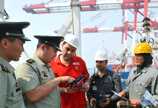
|

|

|
Today's Top News
VW defends safety of recalled New Sagitar
Former premier makes Hurun philanthropists list
Xinjiang publishes anti-terror brochures
SOHO endows $10m to Yale
Cook and Ma talk about partnership
Language a barrier to healthcare for Asian Americans
China businesses need innovation: VC
Security pact sealed with Afghanistan
US Weekly

|

|
